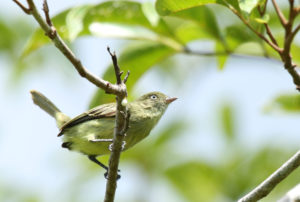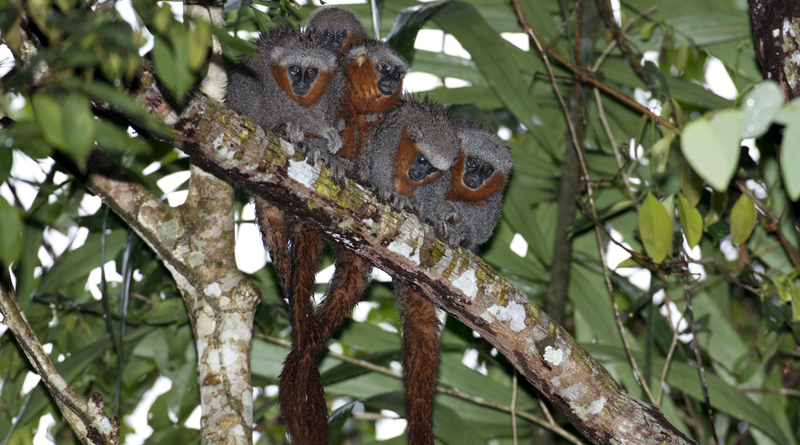381 NEW SPECIES DISCOVERED IN THE AMAZON
A new report by WWF and the Mamirauá Institute reveals that a new species of animal or plant is discovered in the Amazon every 2 days, the fastest rate this century.
However, because huge parts of the forest are being destroyed so fast, WWF is warning that we may never know all of the riches that the world’s largest tropical rainforest holds.
New Species of Vertebrates and Plants in the Amazon 2014-2015, details 381 new species that were discovered over 24 months, including 216 plants, 93 fish, 32 amphibians, 20 mammals (two of which are fossils), 19 reptiles and one bird.
Sarah Hutchison, WWF Head of Programmes Brazil and Amazon said: “We are only at the tip of the iceberg when it comes to unveiling the incredible species that live in the Amazon, yet instead of this precious area being safeguarded, it is under greater threat than ever before. There is a real risk that at the rate at which the Amazon is changing many species may become extinct before we have had chance to find them.
“The discovery of 381 new species is a wake-up call for the Governments of Amazon countries that they must halt the ongoing and relentless deforestation and work to preserve its unparalleled biodiversity. If they don’t, there will continue to be irreversible impacts on the Amazon’s much loved wildlife, undiscovered species and the local and indigenous people that call it home. We hope that this report will inspire scientists and stimulate further research. Sharing new discoveries is essential to supporting conservation efforts and, as one of the last great wildernesses, there are many more secrets left to uncover.”
The Amazon contains nearly a third of all the tropical rainforests left on Earth and, despite covering only around 1% of the planet’s surface, it is thought to be home to 10% of known species. Globally, it is estimated that 80% of species are yet to be identified*. The average rate of new species being named in the Amazon between 1999 and 2013 was one every three days. The new 2014-2015 survey shows a higher rate of discovery, with a species identified every 1.9 days.

The report, which consolidates the findings from a number of different researchers, highlights some of the most fascinating finds, including:
- A new species of pink river dolphin – Estimated to have a population of around 1,000 individuals the species is under threat from the construction of hydroelectric dams, and industrial, agricultural and cattle ranching activities. Pink river dolphins play an important role in the popular imagination and culture of the Amazon, and in the myths and legends which surround it.
- A snake that looks like it has two pairs of eyes – Although small (around 40 cm), this snake is eye-catching due to its colours and patterns. Its head is black, with a pale collar that resembles a broken necklace which, when seen from the top, recalls a pair of eyes. Its lips are white or yellow and it has a triangular mark behind its eyes.
- Fire-tailed titi monkey – This striking monkey from the southern Amazon owes its name to its long bright orange tail. The species is under threat from deforestation.
- A yellow-moustached lizard – This lizard is predominantly dark brown and has black stripes on the sides of its head. In the region of its upper mouth contour, on its head and neck, most scales are covered by a blazing orangish-yellow tinge. The name refers to the yellow tone of the upper lip of this species
- A blind snake that likes to bury itself – The snakes of this family have rudimentary eyes and they spend most of the time buried in the soil or under rocks. In this species, an eye-catching bright yellow tone completely covers the scales on the upper part of its head, as well as the terminal portion of its spine.
- A freshwater honeycomb-patterned stingray – found in the Brazilian state of Rondônia. Its dorsal pattern is usually dark brownish, with honeycomb-like speckles.
- Colourful roadside pond fish – This annual fish was discovered in a roadside pond in Bolivia, which is the only known location where the species occurs. This beautiful fish has a predominantly reddish- brown colour, with white speckles spread over its body, and a blue hue on the distal part of its fins.
- An enigmatic, nocturnal frog – This frog is nocturnal and inhabits open areas on the Venezuelan tepuis table mountain between altitudes of 1,800 and 2,600 metres above sea level. During the day, it is easy to find it on bromeliad plants, where it hides for long periods.
- A curious electric fish – Found in a lowland floodplain of the River Amazon, this electric fish sends out weak electric charges which are incapable of causing harm to other fish. It can reach 1 meter in length, has a long snout, a small, toothless mouth, and a unique colour pattern that consists of a series of dark rounded blotches which run horizontally along the side of its body. It is nocturnal and lives buried in the sand during the day.
- A bird that pays tribute to the Brazilian rubber tapper – Discovered after its unknown call attracted attention, this bird’s name – Chico’s Tyrannulet – is a tribute to the rubber tapper and environmentalist Francisco Alves Mendes Filho. Better-known as Chico Mendes, he was a leader of the rubber tapping communities, and played a key role in opening the world’s eyes to the problems faced by the Amazon.

The current rate of human-related extinction of wildlife is between 1,000 and 10,000 times that of the natural rate of extinction. Knowing the total number of species in the region provides a baseline from which to monitor current and future wildlife losses. The discovery of new species is important for environmental and natural resource management, and it may guide the establishment of protected areas.
The report launch follows the Brazilian Government’s recent decision to allow mining in the National Reserve of Copper and Associates (Renca), a huge protected area the size of Switzerland which encompasses nine protected areas. Allowing deforestation and mining – the area is rich in gold and other minerals – could be disastrous for wildlife and damage local cultures. Following international criticism of the decision, the Brazil Government has since revised the decree to clarify that mining will not be allowed in conservation or indigenous areas within the former reserve.
Due to its vast size, species richness and diversity of habitats, the gaps in scientific knowledge about the Amazon are enormous. The vast majority of occurrence records are a result of observations and collections made along the main rivers, near big cities and in the few protected areas that are most studied. As a result, new studies on the Amazon’s diversity, particular those carried out in the remotest areas, continue to reveal large numbers of species that are as yet unknown to science.
As well as recording the new species of vertebrates and plants discovered in the Amazon between January 2014 and December 2015, the report also includes an update on species identified in a previous 2010- 2013 report.
REFERENCES:
* Source: Mora et al. (2011)
- New Species of Vertebrates and Plants in the Amazon 2014-2015 is available upon request. The publication was developed by WWF’s Living Amazon Initiative and by the Mamirauá Sustainable Development Institute.
- In May WWF- Brazil warned that the country could lose protected areas equivalent to the size of Portugal.
- WWF’s Living Amazon 2016 Report outlines the current status of the Amazon, summarizes key pressures, and presents priorities for conservation action in the Amazon for the next decade.

